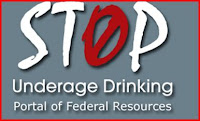
Using data from the National Health and Morbidity Survey from 2005, we examined the contexts of alcohol use in Denmark in relation to gender and age.
Among the 21,832 subjects invited to participate, 14,566 completed the survey. For the entire study population and restricted to heavy users (>21 standard drinks per week for males; >14 for females), we computed the prevalence of each age and gender group who indicated to drink alcohol in different drinking contexts. To compare the contexts for heavy use between age groups, we estimated prevalence ratios for each group compared to the 16–20-year-old age group, with adjustments for gender.
Results showed that more than 68% of the study population drank alcohol in social contexts, such as at home with/visiting family and friends, or in party contexts.
We found similar patterns among males and females; however, there was a predominance of males for drinking alcohol during work and leisure-times. The majority of heavy users also drank alcohol in social and party contexts.
Among heavy users, drinking at home alone was eight times more prevalent among those aged 45–64 compared with those aged 16–20 years.
We concluded that drinking contexts varied in relation to gender and age. Our findings provided useful insight into contexts for alcohol use in Denmark and will enable us to understand better some of the many aspects associated with alcohol use.
Read Full Abstract
Request Reprint E-Mail: mette.
______________________________________
































 18 years) by asking risky drinkers if they were willing to help develop and evaluate Internet-based interventions for drinkers. Those randomly assigned to the intervention condition were provided with the web address and a unique password to a study-specific copy of the CYD. Respondents assigned to the control condition were sent a written description of the different components of the CYD and asked how useful they thought each of the components might be. Respondents were followed up at 3, 6 and 12 months.
18 years) by asking risky drinkers if they were willing to help develop and evaluate Internet-based interventions for drinkers. Those randomly assigned to the intervention condition were provided with the web address and a unique password to a study-specific copy of the CYD. Respondents assigned to the control condition were sent a written description of the different components of the CYD and asked how useful they thought each of the components might be. Respondents were followed up at 3, 6 and 12 months. 